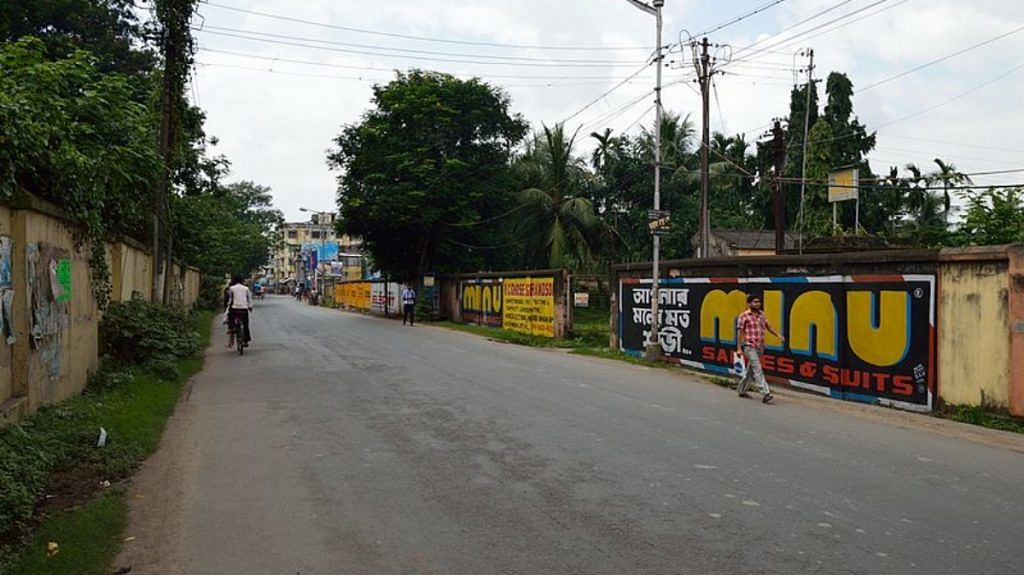New Delhi: Prime minister Narendra Modi has announced a ‘janata curfew’ Sunday, urging all citizens to stay indoors for 14 hours.
The request comes in the wake of increasing numbers of patients infected with COVID-19. During his address to the nation Thursday, the PM also explained the importance of social distancing and urged citizens to stay vigilant.
India seems to be following the path of other affected countries, with numbers doubling every 2.5 days.
Unfortunately, India has been testing far less than other countries and thus numbers are expected to climb steeply in the coming days.
Going by the transmission pattern of other countries, there has been a surge in the number of positive cases around the third week since the first case was reported.
According to public health sector experts, the objective is now to flatten the curve of the spread of the virus, and the PM’s announcement of a voluntary one-day curfew is seen widely as a trial run to a potential national shut down.
The move is not expected to bring down the transmission of the disease but help people mentally prepare. A complete shutdown will affect workers and businesses across society for weeks, and Sunday could be a test day to prepare, say public health experts.
Calling the ‘janata curfew’ a symbolic move, Anant Bhan, researcher of public health and bioethics, said sitting at home for half a day is not expected to bring down the transmission of the disease.
“A curfew of 14 hours is not going to make much of an impact, the move is to prepare people for staying at home, maintaining distance, which may be needed in the future,” Bhan said.
“In case, we do need more mandatory lockdowns in the future, India being a liberal democracy would have to figure out how to implement them.”
Lockdowns can also not be implemented at a national level, and these measures will have to be taken at the local level considering the disease spread in the area, explained Bhan.
“For now, ‘janata curfew’ is more of a communication and symbolic exercise,” he said.
Also read: European registry of patients to contact tracing app — 5 global developments on COVID-19
What happens to the number of cases in 14 hours?
Virologists say that the 14-hour break will not have much impact to the number of cases.
“If there is no traffic on Sunday because everyone is staying indoors due to a curfew, there might be a handful of accidents averted,” said T. Jacob John, retired professor of Virology at Christian Medical College, Vellore, and who formerly headed the Indian Council for Medical Research’s Centre for Advanced Research in Virology.
“But on Monday when all the traffic is back on the roads, the number of accidents go up.”
Essentially, the spread of the virus is curtailed or paused for a day. But this doesn’t mean it ensures no spread.
If there are people who’re infected and are currently indoors, they could infect the rest of the household anyway. This is especially so for asymptomatic transmission, which is very common in COVID-19. And in India, even though the numbers are currently low, it is risky to estimate that these are likely to be only a handful of people.
Additionally, the curfew also doesn’t mean it will ensure no climb in numbers.
The numbers are recorded when people displaying symptoms test positive. However, there are those who continue to spread asymptomatically. Further, many people who’re already infected might not display symptoms or could suddenly display symptoms Sunday, increasing the number of cases.
But what happens to the virus itself is a different matter.
“The duration in which an infectious person can transmit to others is several days long,” said John.
“A single’s day’s holiday might cut down the chances of a handful of people. Because the person who might have gotten infected on a bus on Sunday didn’t step out. But the person who could have infected them continues to remain infectious. They will spread the disease on Monday and the day after that.”
“It might be one day less of infection, and would make a dent in the life of the people who would have gotten infected on Sunday,” he added.
“But in terms of larger numbers, it’s anybody’s guess. Just 14 hours is unlikely to make a dent in the bigger picture.”
Curfew can help prepare people for social distancing
Dr Giridhara R. Babu, head at life-course epidemiology, Public Health Foundation of India, however, said it is a good strategy with two objectives.
“First, all hospitals should carry out a preparedness drill on Sunday. Guidelines for this drill have been made available on the Health Ministry website. This is to make sure that hospitals will be battle ready if there is a surge in cases in future. No country has done it before during the current COVID-19 outbreak,” said Babu.
Second, from a public health perspective, we can prepare people to participate in social distancing voluntarily by tapping into the public support for the prime minister and using his rapport with the public, he said.
“We can’t forcefully shut everything down like China.”
“If it is successful for a day on 22nd March, we can rely on extending this if needed,” he added.
Also read: On science of Covid-19 — drugs, threat to diabetics and why it’s killing more Italians
